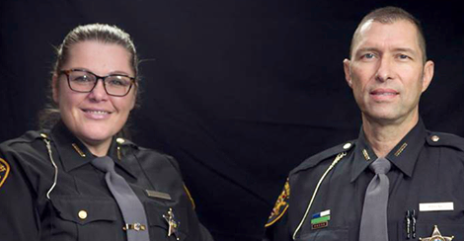Deputy's gift of life shows the value of organ donors

Those in search of a Christ- mas angel need look no farther than Mahoning County Deputy Sheriff Marcella Walter. Earlier this month, Walter exemplified the true meaning of holiday giving by making a deeply personal and heartfelt sacrifice.
Walter donated one of her kidneys to fellow Deputy Sheriff John Marenkovic to serve as a healthy backup for his own, which had degenerated to having only about 11 percent function left. The operation took place at the University of Pittsburgh Medical Center, and early indicators point to resounding success with both donor and recipient recovering well.
The deputy’s gift of life did not go unnoticed by Sheriff Jerry Green. “We do a lot of things that are dangerous, but this is really and truly an act of selflessness and bravery. They’re not even family members. They’re brothers and sisters through law enforcement,” the sheriff said.
The donation also prompted the county commissioners to approve an amendment to the contract for sheriff’s office employees giving them 240 hours of paid leave for recovery if they donate a kidney or liver.
People like deputy Walter, however, are not motivated by personal praise or special incentives to save and heal lives through organ donation. Most often, compassion for their fellow men and women fuel their overpowering sense of selfless giving.
Fortunately, such compassion has been growing by leaps and bounds in recent years.
The United Network for Organ Sharing has reported that 33,606 organ transplants were performed in the United States in 2016, up from 30,973 the previous year, an 8.5 percent increase. Transplantation grew at an even faster clip in Ohio last year, rising from 1,231 in 2015 to 1,360 in 2016, an increase of 10.5 percent.
Medical technology
That increase also is attributable to advances in medical technology that now make transplantation viable and routine treatment options – not scary experimental trials. Those advances also have allowed surgeons to use organs that might not have been suitable a few years ago to become strong candidates for successful operations, according to Lifeline of Ohio, a nonprofit that promotes and coordinates the donation of human organs and tissue for transplantation in the Buckeye State.
Yet despite those optimistic and heartening trends, the reality remains that far too many individuals have their lives cut far too short simply for the lack of a suitable and willing organ donor.
According to the UNOS, every 10 minutes, one American is added to the national transplant waiting list of hundreds of thousands of patients every 10 minutes, and on average, 20 people die each day while waiting anxiously for a transplant donor.
Clearly, the easiest and most effective solution toward narrowing that gap is through ongoing expansion of the donor base in our state and nation.
But deputy Walter reminds us of what should be the primary motivation to lessening the gap between available donors and patients in need of lifesaving organs.
“It’s a blessing for both of us,” Walter said of her gift to Marenkovic. “I’m so grateful I could give him an easier life.”
 43
43
